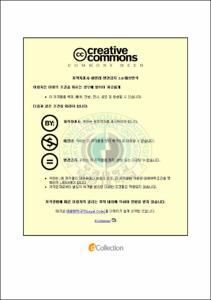원산지이미지가 브랜드동일시와 브랜드태도에 미치는 영향
- Alternative Title
- The Effects of Country-of-Origin Image on Brand Identification and Brand Attitude : The Moderating Roles of Product Type and Product Knowledge
- Abstract
- Under the present business environment, the globalization has become the reality that can not be avoided and overseas direct investment of multinational corporations has already penetrated into our daily life. We are able to purchase various products from various countries without going abroad. Such an environment has brought fierce competition to the market. A significant phenomenon in the competition is that products imported from certain countries are popular among consumers while others are not. A possible explanation for this can be that country-of-origin image plays an important role in consumer's decisions.
The main purpose of this study is to provide international marketers or advertising practitioners with a comprehensive guideline for improving country-of-origin image by using appropriate advertising strategies. For this purpose, this study was designed to analyze the way country-of-origin image affects brand identification and brand attitude. It was also attempted to see if the effects of country-of-origin image vary with product type and product knowledge.
Digital camera was selected as a utilitarian product and perfume was chosen as a hedonic product in the pretest. In addition, this study used real brand names (Canon for digital camera and Chanel for perfume) and country-of-origin cues (Japan vs. China, France vs. Thailand).
The structural equation modeling was conducted for analyzing the data. The results found that country-of-origin image gave a positive effect on brand identification and brand attitude. As for the moderating roles of product type and product knowledge, product type was not supported but product knowledge was partially supported. The moderating roles of product type showed no differences, whereas product knowledge produced differences between low knowledge group and high knowledge group. The low knowledge group formed brand identification and brand attitude by the external cue (country-of-origin image) by processing the product information through the central path.
- Issued Date
- 2008
- Awarded Date
- 2008. 2
- Type
- Dissertation
- Publisher
- 부경대학교 경영대학원
- Alternative Author(s)
- Lee, Eun Mi
- Affiliation
- 부경대학교 경영대학원
- Department
- 경영대학원 경영학과경영학전공
- Advisor
- 전중옥
- Table Of Contents
- 제1장 서론 = 1
제1절 연구의 배경 및 목적 = 1
1. 연구의 배경 = 1
2. 연구의 목적 = 4
제2절 연구의 방법 및 범위 = 5
제3절 연구의 체계 = 6
제2장 이론적 배경 = 7
제1절 원산지이미지 = 7
1. 원산지이미지의 정의 = 7
2. 원산지효과에 관한 선행연구 = 11
제2절 브랜드동일시 = 17
1. 브랜드동일시의 정의 = 17
2. 브랜드동일시 이론의 배경 = 18
3. 브랜드동일시의 역할 = 21
4. 브랜드동일시에 관한 선행 연구 = 22
제3절 브랜드태도 = 25
제4절 소비자 구매의도 = 26
제5절 제품유형 = 28
제6절 제품지식 = 31
1. 제품지식의 정의 = 31
2. 제품지식에 관한 선행 연구 = 37
제3장 연구모형의 도출 및 가설 설정 = 40
제1절 연구모형의 설정 = 40
제2절 연구가설의 설정 = 41
1. 원산지이미지와 브랜드동일시의 관계 = 41
2. 원산지이미지와 브랜드태도의 관계 = 42
3. 브랜드동일시와 브랜드태도의 관계 = 42
4. 브랜드동일시와 구매의도의 관계 = 43
5. 브랜드태도와 구매의도의 관계 = 43
6. 제품유형의 조절적 역할 = 44
7. 제품지식의 조절적 역할 = 45
제4장 연구방법 및 자료수집 = 47
제1절 구성개념의 조작적 정의 = 47
1. 원산지이미지 = 47
2. 브랜드동일시 = 47
3. 브랜드태도 = 48
4. 구매의도 = 48
5. 제품유형 = 48
6. 제품지식 = 49
제2절 조사설계 및 자료의 수집 = 50
1. 예비조사대상 = 50
2. 표본선정 및 자료수집 = 50
제3절 분석방법 = 52
제5장 실증연구 및 분석결과 = 53
제1절 신뢰성 및 타당성 분석 = 53
1. 신뢰성 검증 = 53
2. 타당성 검증 = 55
제2절 연구가설 검증 = 59
1. 연구모형의 적합도 평가 = 59
2. 연구가설의 검증 = 63
제6장 결론 = 66
제1절 연구 요약 및 시사점 = 66
제2절 연구의 한계점 및 향후 연구방향 = 68
참고문헌 = 69
설문지 = 79
- Degree
- Master
- Appears in Collections:
- 경영대학원 > 경영학과-경영학전공
- Files in This Item:
-
-
Download
 원산지이미지가 브랜드동일시와 브랜드태도에 미치는 영향.pdf
기타 데이터 / 1.01 MB / Adobe PDF
원산지이미지가 브랜드동일시와 브랜드태도에 미치는 영향.pdf
기타 데이터 / 1.01 MB / Adobe PDF
-
Items in Repository are protected by copyright, with all rights reserved, unless otherwise indicated.